Sucrose Rich Foods and Sucrose Intolerance
List of Sucrose Rich Foods and Sucrose Intolerance
Introduction
Sucrose is a common sugar, also known as cane sugar or saccharose. It is a disaccharide, an equal combination of two monosaccharides: glucose and fructose. In nature, sucrose is produced in plants through photosynthesis. Later, humans extract the sucrose from the plants and process it into the white sugar that we know. The name “sugar,” or “sucre” in French, originates from the word sucrose.
@tableOfContentsRecommendations
Based on the World Health Organisation (WHO) guidelines, daily intake of free sugars, for both children and adults, should be less than 10% of their total energy intake, which is equal to roughly 200 calories for an average adult. A further reduction to below 5% or roughly 25 grams (6 teaspoons) per day would provide additional health benefits (1). Overusing sucrose is a risk factor for the development of metabolic syndrome, including type 2 diabetes, hypertension, and obesity.
Metabolism in the Body
When sucrose is consumed, it reaches all the way to the duodenum without changing its form. In the duodenum’s microvilli, sucrose is broken down into separate molecules of fructose and glucose by the enzyme named sucrase-isomaltase and absorbed into the bloodstream. Due to this, sucrose tends to elevate blood glucose levels quickly. However, it has a medium glycemic index of 65 (2).
Sucrose Intolerance
Sucrose intolerance is the inability of sucrose breakdown by the small intestine. Sucrose intolerance can be primary or secondary. Primary sucrose intolerance is also called congenital or genetic sucrase-isomaltase deficiency (CSID or GSID). As the name implies, people with this condition lack the enzymes sucrase and isomaltase, responsible for digesting sucrose. This condition can be caused by many mutations in the sucrose gene that can occur on either sucrase or isomaltase units, resulting in varying activities of the sucrase-isomaltase enzyme (3).
Secondary or acquired sucrase-isomaltase deficiency is more often caused by the atrophy of small intestinal villi due to various chronic diseases, such as celiac disease, Crohn’s disease, chemotherapy, allergic enteropathy, immunodeficiency, and others. Acquired sucrose intolerance can also occur due to infections or motor dysfunctions of the gastrointestinal tract (3).
Sucrose Intolerance Symptoms
Regardless of the cause of sucrose intolerance, the clinical symptoms are the same. However, symptom severity can depend on the lack of enzymes or the level of small intestinal dystrophy.
Because sucrose has an osmotic effect, its accumulation in the intestinal lumen causes the liquid to stay in the intestines. This leads to hyperosmolar diarrhea. The undigested sucrose reaching the bacteria in the colon goes through bacterial fermentation. This process releases gases in the colon, causing bloating, abdominal pain, and flatulence. Constant diarrhea can lead to malnourishment and weight loss.
There can also be atypical symptoms, such as vomiting, alteration between diarrhea and constipation, anxiety, heart palpitations.
Due to the shorter length of the small intestine, children are more susceptible to symptoms. Therefore, symptoms can improve with age (3).
It may be imperative for people with sucrose intolerance to modify their diets and exclude or lower their sucrose intake. Therefore, it is essential to know which foods contain high levels of sucrose.
References

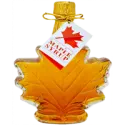

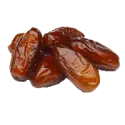
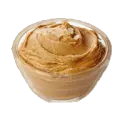

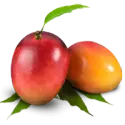
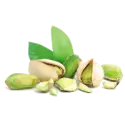
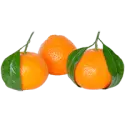

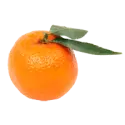

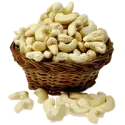
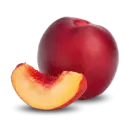
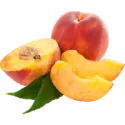


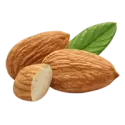


References
All the values for which the sources are not specified explicitly are taken from FDA’s Food Central. The exact link to the food presented on this page can be found below.
- Sugar - https://fdc.nal.usda.gov/fdc-app.html#/food-details/169655/nutrients
- Maple syrup - https://fdc.nal.usda.gov/fdc-app.html#/food-details/169661/nutrients
- Chocolate - https://fdc.nal.usda.gov/fdc-app.html#/food-details/170271/nutrients
- Dates - https://fdc.nal.usda.gov/fdc-app.html#/food-details/171726/nutrients
- Peanut butter - https://fdc.nal.usda.gov/fdc-app.html#/food-details/172470/nutrients
- Dried fruit - https://fdc.nal.usda.gov/fdc-app.html#/food-details/173941/nutrients
- Mango - https://fdc.nal.usda.gov/fdc-app.html#/food-details/169910/nutrients
- Pistachio - https://fdc.nal.usda.gov/fdc-app.html#/food-details/170184/nutrients
- Mandarin orange - https://fdc.nal.usda.gov/fdc-app.html#/food-details/169105/nutrients
- Pineapple - https://fdc.nal.usda.gov/fdc-app.html#/food-details/169124/nutrients
- Clementine - https://fdc.nal.usda.gov/fdc-app.html#/food-details/168195/nutrients
- Apricot - https://fdc.nal.usda.gov/fdc-app.html#/food-details/171697/nutrients
- Cashew - https://fdc.nal.usda.gov/fdc-app.html#/food-details/170162/nutrients
- Nectarine - https://fdc.nal.usda.gov/fdc-app.html#/food-details/169914/nutrients
- Peach - https://fdc.nal.usda.gov/fdc-app.html#/food-details/169928/nutrients
- Macadamia - https://fdc.nal.usda.gov/fdc-app.html#/food-details/170178/nutrients
- Hazelnut - https://fdc.nal.usda.gov/fdc-app.html#/food-details/170581/nutrients
- Almonds - https://fdc.nal.usda.gov/fdc-app.html#/food-details/170567/nutrients
- Carrot - https://fdc.nal.usda.gov/fdc-app.html#/food-details/170393/nutrients
- Grapefruit - https://fdc.nal.usda.gov/fdc-app.html#/food-details/174673/nutrients
